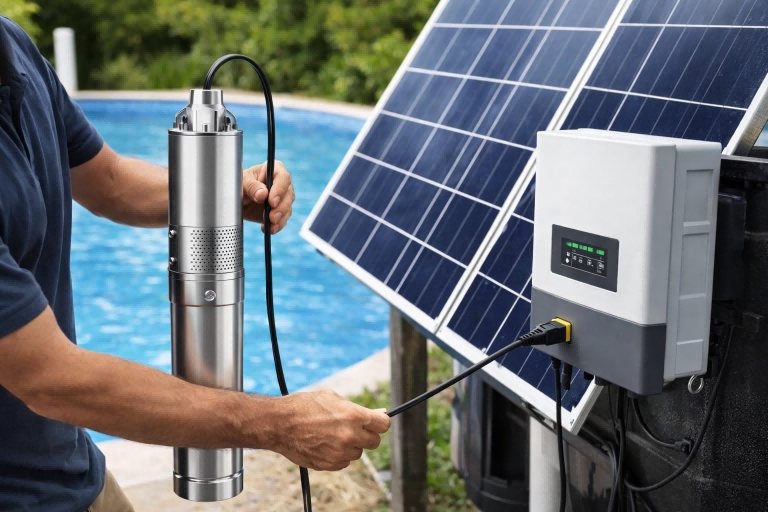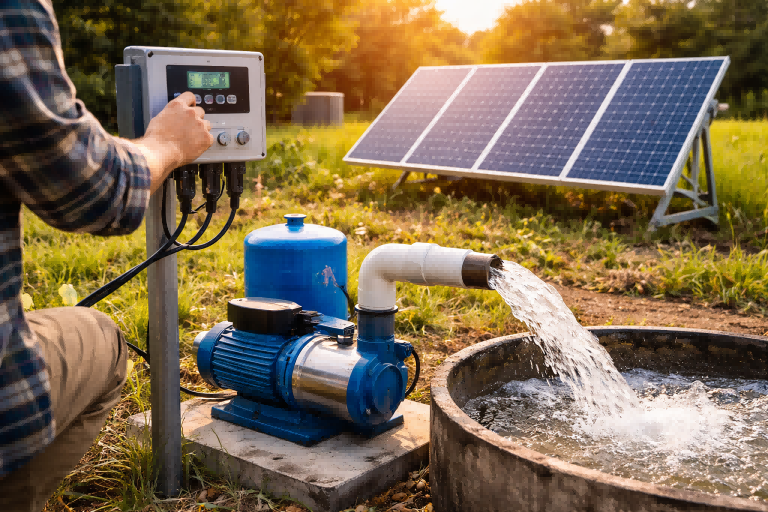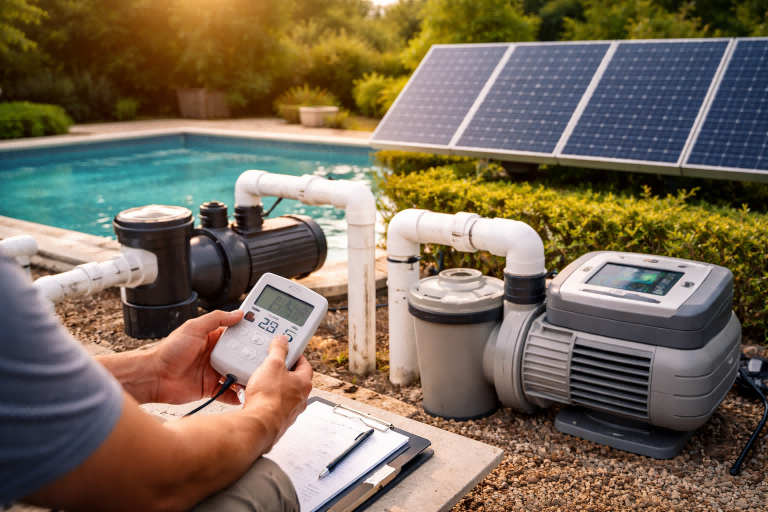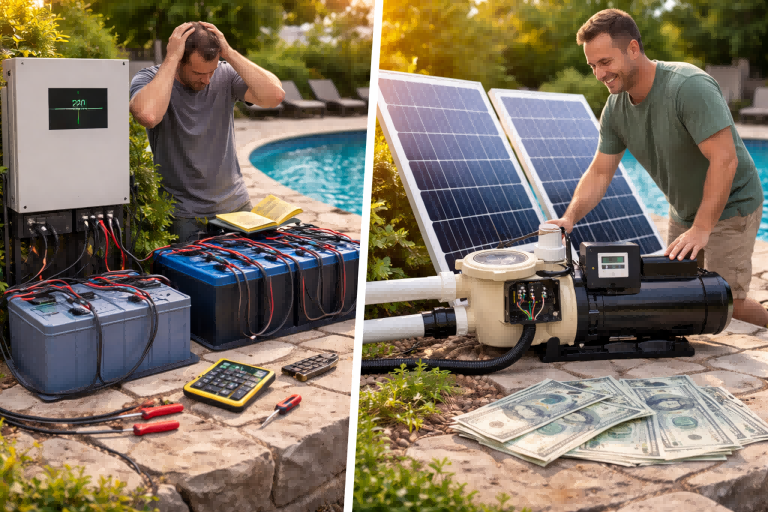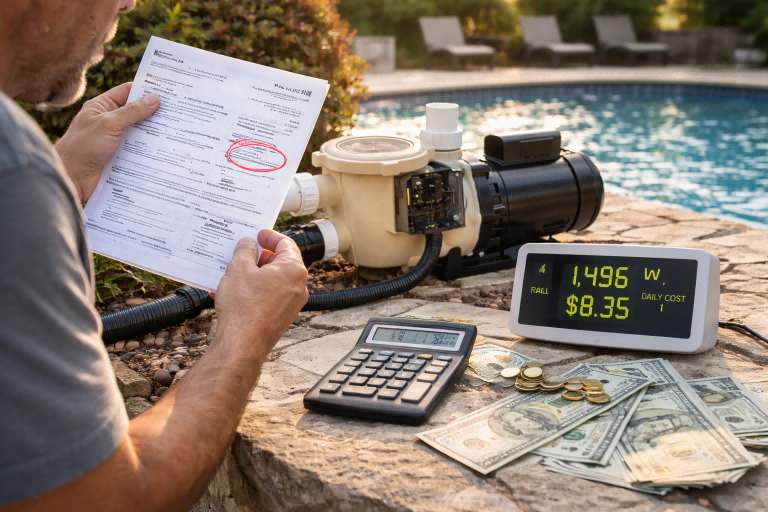Are you worried about damaging your pump by running it without water?
This common concern can lead to catastrophic failure and expensive repairs if not properly understood.
No, a standard self-priming pump should not be allowed to run dry.
Even temporary dry running can generate intense heat, causing severe damage to the mechanical seal, which ultimately leads to pump failure [^1].
The casing must be filled with fluid before startup for it to operate correctly and safely [^2].
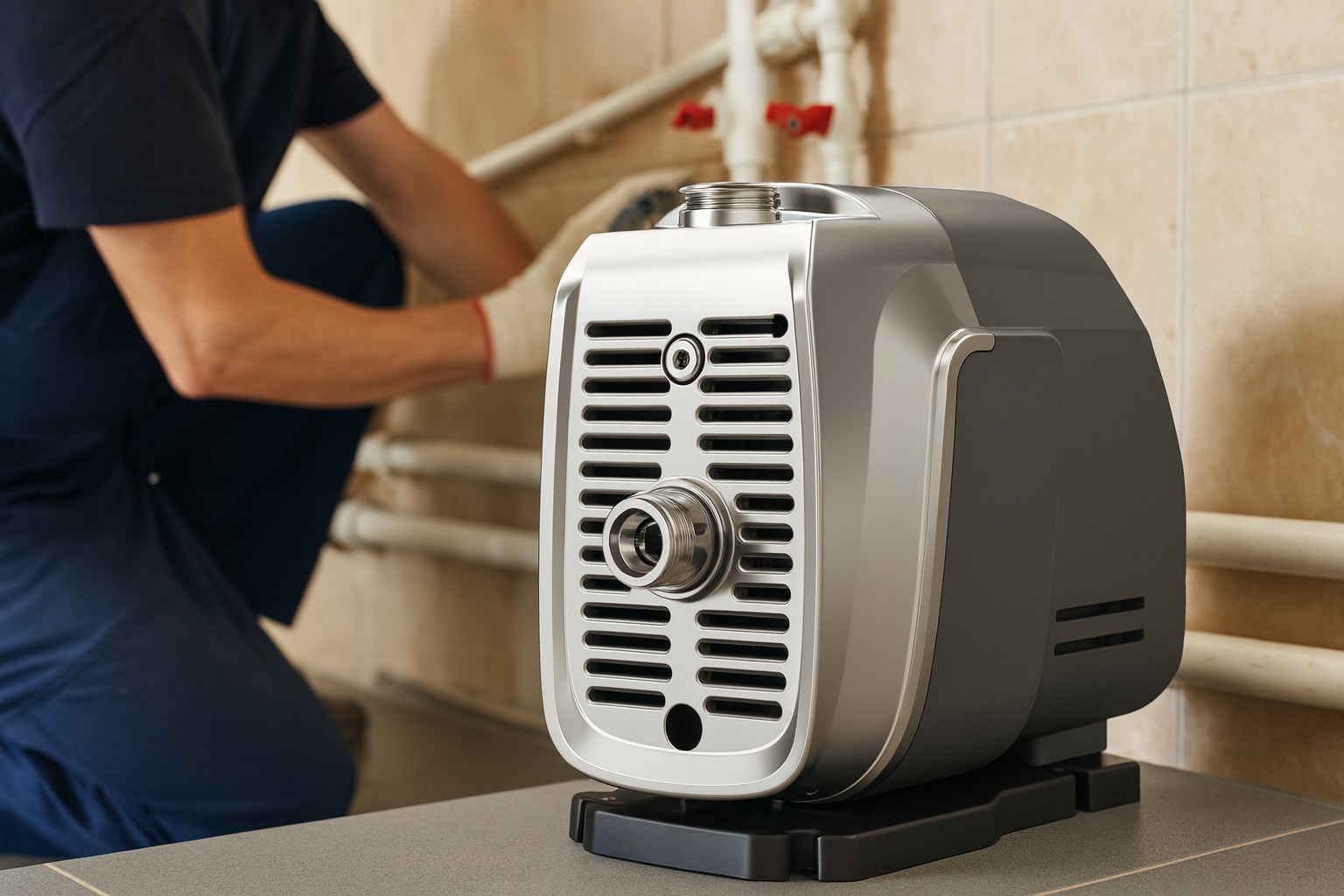
While the name "self-priming" sounds like it can magically handle any situation, the reality of its operation is grounded in specific hydraulic principles.
A misunderstanding of these principles is often what leads to preventable damage.
The ability of a pump to prime itself is a clever process, but it is not an immunity to the laws of physics, especially concerning heat and friction.
To truly protect your equipment and ensure a long operational life, it is essential to look beyond the name and understand what happens inside the pump, both during a normal priming cycle and during the destructive moments of a dry run.
Let's explore why this happens and what modern solutions exist to prevent it.
Why Running a Self-Priming Pump Dry Causes Critical Damage
Have you ever wondered what is physically happening inside your pump when it runs without water?
The internal components are put under extreme stress, creating a perfect storm for rapid and severe damage.
The number one victim of a dry run is the mechanical seal.
This critical component requires the pumped liquid for both lubrication and cooling.
Without fluid, the intense friction between the seal faces generates a huge amount of heat, quickly destroying the seal and leading to catastrophic failure [^2].
The Crucial Role of the Mechanical Seal
A mechanical seal is an incredibly precise component.
Its job is to form a running seal between the rotating pump shaft and the stationary pump casing.
It prevents water from leaking out while allowing the shaft to spin freely at thousands of revolutions per minute.
The seal consists of two primary parts, often made of materials like carbon and ceramic, that are lapped to a microscopic level of flatness.
They press against each other, creating the seal.
A thin film of the pumped fluid works its way between these faces.
This fluid film is essential.
It acts as a lubricant to reduce friction and as a coolant to carry away the heat that is inevitably generated.
Heat: The Silent Killer
When a pump runs dry, this vital fluid film disappears.
The seal faces are now spinning against each other without any lubrication or cooling.
The result is a rapid and dramatic increase in temperature.
This extreme heat can cause the seal faces to crack, warp, or shatter in a matter of seconds.
It can also damage the elastomeric parts, like O-rings, that are part of the seal assembly, causing them to become brittle and lose their sealing ability.
Think of it like running a car engine without oil; the friction between moving metal parts would quickly cause the engine to seize and self-destruct.
The same principle applies to a pump's mechanical seal.
Damage Beyond the Seal
While the mechanical seal is the first and most vulnerable component, the damage doesn't always stop there.
The intense heat generated can travel along the shaft.
In some pump designs, particularly those with thermoplastic impellers or casings, this heat can cause these parts to melt or deform.
This secondary damage can compromise the pump's hydraulic performance even if the seal is replaced, sometimes requiring a complete pump rebuild or replacement.
| Operating Condition | Mechanical Seal Lubrication | Temperature | Component Risk | Pump Outcome |
|---|---|---|---|---|
| Normal (Wet) | Constant fluid film | Stable | Low | Long, reliable lifespan |
| Abnormal (Dry) | None | Rises rapidly | High | Seal failure, potential impeller damage |
How a Self-Priming Pump Actually Works
The term "self-priming" can be a bit of a misnomer, leading users to believe the pump needs no assistance.
In reality, it's a clever engineering process that still depends entirely on one crucial element: an initial charge of liquid in the casing [^3].
This process isn't magic; it's a two-phase operation that first pumps air and then transitions to pumping liquid.
A self-priming pump works by using an initial volume of liquid stored in its casing to create a vacuum.
The impeller mixes this liquid with the air from the suction line.
This mixture is then separated, with the air being expelled, which gradually draws the desired fluid up the suction line until the pump is fully primed and operating normally [^3].
The Priming Cycle Step-by-Step
Understanding the priming cycle reveals why that initial fluid is non-negotiable.
The entire process is a sequence of events designed to replace the air in the suction line with liquid.
1. The Initial "Prime" Fill
Before the first start-up, the pump's casing or priming chamber must be manually filled with liquid.
This liquid is what the pump will use to get the process started.
Without this initial fill, the impeller would just spin uselessly in the air [^2].
2. Recirculation and Mixing
Once the pump is turned on, the impeller begins to rotate.
It immediately starts moving the liquid that was just added.
Simultaneously, it starts drawing air from the suction line.
The key action here is that the impeller mixes this air with the liquid in the casing, creating a frothy air-liquid mixture [^1].
3. Air and Liquid Separation
This frothy mixture is then discharged into a reservoir or volute that is specially designed for separation.
Because the liquid is heavier than the air, it falls back down due to gravity.
The lighter air bubbles separate and rise [^3].
4. Evacuating the Air
The separated air is then forced out through the pump's discharge line.
Meanwhile, the separated liquid, now free of air, is directed back to the eye of the impeller through a recirculation port.
This liquid is then used again to mix with more air being drawn from the suction line [^1].
5. Creating a Vacuum
This continuous process of drawing in air, mixing it, separating it, and expelling it effectively removes air from the suction line.
As air is removed, it creates an area of low pressure, or a partial vacuum, at the eye of the impeller [^1].
6. Atmospheric Pressure Takes Over
The final piece of the puzzle is atmospheric pressure.
The pressure of the atmosphere pushing down on the surface of the liquid in the tank or sump is now greater than the pressure inside the suction line.
This pressure differential is what physically pushes the liquid up the suction line and into the pump.
Once all the air is purged and the suction line is full of liquid, the priming cycle is complete.
The pump then stops recirculating and begins operating like a standard centrifugal pump, delivering a steady flow of liquid.
Common Causes of Priming Failure
Your pump is struggling to prime, and you have already confirmed the casing is filled with water.
So, what else could be wrong?
Several hidden issues can interrupt the delicate priming process, preventing your pump from working as it should.
Priming failures are most often caused by air leaks in the suction line, debris physically clogging the impeller, or an internal blockage of the recirculation port [^1].
Any of these problems stop the pump from creating the necessary vacuum, causing it to run without pumping liquid and risking serious damage.
Suction-Side Problems
More often than not, the root cause of a priming failure is located on the suction side of the pump.
These issues are all related to preventing the pump from being able to pull a solid, uninterrupted column of water.
Air Leaks
This is by far the most common culprit.
Even a tiny pinhole leak in the suction hose, a loose-fitting, or a bad gasket will allow the pump to suck in a continuous stream of air.
The pump is designed to handle the initial volume of air in the line, but it cannot overcome a constant leak.
It will continue to draw in more air than it can expel, and it will never achieve a full prime.
Debris Blockage
If the pump is drawing water from a source like a sump, pond, or tank, there is always a risk of debris.
Leaves, stones, sediment, or other foreign objects can be drawn into the suction line.
If this debris makes it to the pump, it can become lodged in the eye of the impeller, physically obstructing it.
This blockage severely hinders the impeller's hydraulic ability to generate flow and create the low-pressure zone required for priming [^1].
Internal Pump Issues
Sometimes, the problem lies within the pump itself.
This can be due to either a blockage or simple wear and tear from normal operation over time.
Plugged Recirculation Port
As we learned, the recirculation port is essential for returning the separated liquid back to the impeller to continue the priming process.
If this small port becomes clogged with debris or sediment, the priming cycle is halted dead in its tracks.
The pump can no longer create the liquid-air mixture, and the priming process fails [^1].
Excessive Impeller Clearance
Over time, abrasive fluids can wear down the pump's internal components.
The clearance, or the gap between the spinning impeller and the stationary wear plate or volute, can slowly increase.
If this clearance becomes too large, the pump's efficiency drops significantly.
It struggles to generate enough vacuum to lift the water, leading to extended priming times or outright failure [^1].
System Design Flaws
Finally, the problem might not be with the pump at all but with the way the system has been designed or installed.
Suction Lift is Too High
Every self-priming pump has a maximum vertical distance it can pull water from, known as its maximum suction lift.
This is typically limited by physics to around 25 feet (7.6 meters) at sea level.
If the pump is installed too high above the water source, it will be physically impossible for it to prime, no matter how well it is working [^1].
Air-Bound Pump
An air-bound pump is one that cannot get rid of the air it's trying to vent.
This can happen if a valve on the discharge line is closed, trapping the air, or if there is no proper air release line installed, giving the air nowhere to go [^1].
The pump separates the air, but the trapped air creates back-pressure, preventing any more from being expelled.
The Modern Solution: Pumps with Built-in Dry-Run Protection
What if your pump was smart enough to protect itself from the single most common cause of catastrophic failure?
Modern pump technology provides an elegant answer, using onboard intelligence to prevent costly damage before it can even start.
Advanced intelligent pumps now come equipped with sophisticated dry-run protection systems [^4].
These pumps use integrated sensors to actively monitor for a lack of water and are programmed to automatically shut down the motor when a dry-run condition is detected.
This crucial feature prevents the pump from overheating and destroying its mechanical seal, dramatically extending its lifespan and overall reliability.
How Intelligent Dry-Run Protection Works
The technology behind this protection is a fusion of durable hardware and smart software.
It moves pumps from being simple mechanical devices to intelligent, self-aware machines.
Integrated Sensor Technology
Modern pumps integrate highly accurate sensors that monitor key operational parameters in real-time.
These are not simple on/off switches but sophisticated transducers.
- Pressure Sensors: These detect a sudden and dramatic drop in discharge pressure, which is a clear indicator that the pump is no longer moving water.
- Flow Sensors: Some designs incorporate sensors that directly measure the flow of liquid through the pump. A zero-flow reading while the motor is running triggers a shutdown.
- Motor Load/Power Consumption: An intelligent controller can monitor the power the motor is drawing. Pumping air requires significantly less energy than pumping water. This change in power consumption is a reliable way to detect a dry run.
The Smart Controller "Brain"
Data from these sensors is fed into a microprocessor-based controller board.
This controller is programmed with firmware that contains algorithms to recognize the signature of a dry-run event.
When the incoming data matches the dry-run parameters, the controller immediately cuts power to the motor, protecting the pump from harm.
Beyond Shutdown: Smart Recovery Algorithms
The most advanced systems don't just shut off and wait for manual intervention.
They feature intelligent recovery algorithms designed to resolve the issue automatically.
When a dry run is first detected, a smart pump might enter a "self-priming recovery" mode.
It may run for a specific, limited time (e.g., 360 seconds) to see if it can re-prime itself.
If it fails, instead of continuing to run and risk damage, it enters a "sleep" period.
After a programmed delay (e.g., 5 minutes, then 2 hours), it will automatically attempt to start again, checking if the water source has been restored.
This "try-and-rest" cycle prevents damage, conserves energy, and allows the system to recover automatically from temporary issues like a well running low.
The Clear Advantage for Professionals
For pump importers, distributors, and installers, this technology is a game-changer.
- Drastically Reduced Warranty Claims: Since dry running is a leading cause of failure, pumps with this protection see far fewer breakdowns. This translates to lower warranty costs and happier customers.
- Increased Product Value and Trust: A pump that protects itself is a superior product. It builds brand reputation and provides a clear selling point over less advanced competitors.
- Peace of Mind for the End User: This feature provides ultimate peace of mind for the property owner, protecting their investment against fluctuating water levels or accidental shut-offs in the supply line.
| Feature | Standard Self-Priming Pump | Pump with Intelligent Dry-Run Protection |
|---|---|---|
| Dry-Run Event | Continues to run until it fails | Shuts down automatically within seconds |
| Damage Risk | High (Seal failure guaranteed) | Extremely Low |
| Recovery | Manual reset and repair required | Automatic recovery attempts |
| Lifespan | Reduced by user error | Maximized by self-protection |
Conclusion
While a self-priming pump cannot run dry without risking severe damage, modern technology now offers a powerful safety net.
Intelligent pumps with built-in dry-run protection represent the future of reliable water management.
Frequently Asked Questions
How long can a self-priming pump run dry?
It should not run dry at all. Even a few seconds without liquid can cause enough heat to permanently damage the mechanical seal.
What happens if you run a self-priming pump backwards?
Running a centrifugal pump backwards will cause it to operate with very low efficiency and pressure. Prolonged reverse operation can potentially damage the motor or impeller.
Do all self-priming pumps need to be primed initially?
Yes, absolutely. The term "self-priming" refers to its ability to purge air from the suction line, but the pump casing must first be filled with liquid to start this process.
Can a self-priming pump push air?
It is designed to push air out of the suction system during the priming cycle. However, it cannot operate continuously by pumping only air; it requires liquid to function.
What is the difference between a self-priming pump and a submersible pump?
A self-priming pump is installed in a dry location above the water level. A submersible pump is placed directly into the water and does not need to be primed.
How do you fix a self-priming pump that won't prime?
First, ensure the casing is full of liquid. Then, carefully check the entire suction line for any potential air leaks. Finally, inspect the impeller for any debris or clogs.


